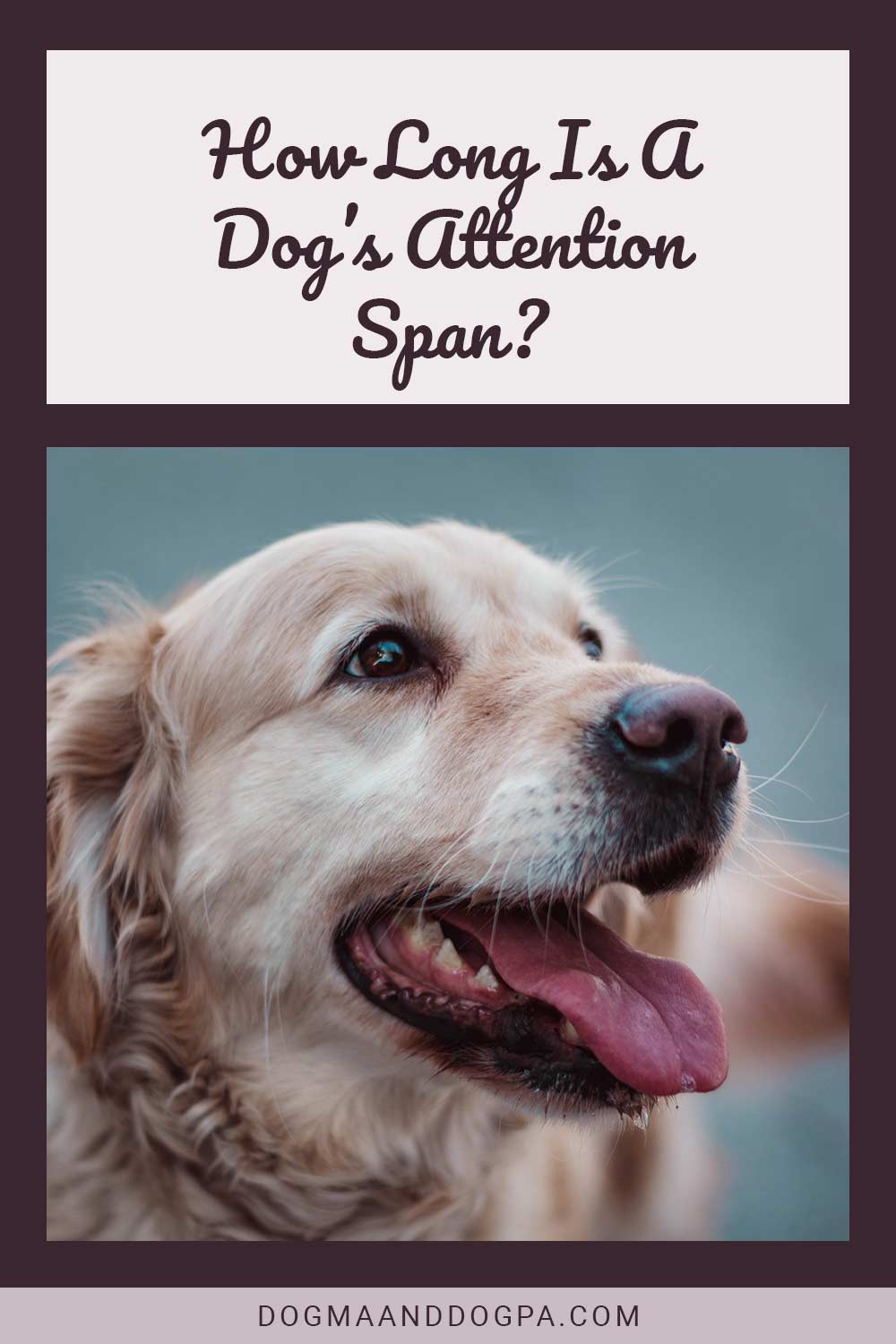A dog’s ability to focus varies greatly among breeds. The average dog has a 15- to 30-minute attention span. No activity, including training, should take longer than 45 minutes with the dog.
Does it Vary by Breed?
Dogs of all ages and breeds have varying degrees of difficulty focusing on tasks, with puppies, active dog breeds, and older dogs having the most trouble. On average, however, docile and well-trained dog breeds have a longer attention span.
Some dog breeds can’t concentrate on a single task (like fetching a ball) for more than half an hour at a time, while others can do so for several hours.
Can You Train Your Dog to Have a Longer Attention Span?
Yes, it is possible to train your dog to have a longer attention span. The foundation of all the work you and your dog will do together is your ability to attract and maintain your dog’s attention throughout training.
Once he masters the ability to focus, his learning will accelerate. If he does well in training, his confidence will rise, and he’ll be more eager to work hard and pay attention the next time around.
How To Do it?
The best way to increase your dog’s attention span is through the act of training. Here are a few ways to grow your dog’s attention span during training sessions.
Using your Dog’s Name Positively
You should never use the dog’s name as a form of discipline. The dog will have such a negative association with his name that he will not respond well when you use it to train or praise him. This dog will not cooperate during training and may even try to flee.
Say the dog’s name in a happy, upbeat tone while holding a treat in front of the dog while it is leashed and seated. Whenever you’re training a dog, it’s important to reward him as soon as he looks at you, and this is no exception.
Just a few more reps of this upbeat, optimistic training session would be great. If you don’t want your dog to become bored or overweight, you shouldn’t let him get too much food or play. Instead, try a few more times until you see that he is bored, restless, or hungry.
“Watch Me”
After proper training, your dog should immediately turn to you when you call his name in a happy tone. One of the most useful commands for a dog’s owner to teach them is “sit,” and once you’ve established that behavior, you can move on to the next step.
You’ll have a tasty, valuable reward right in front of your nose. Simply use the phrase, “(Dogs Name), keep an eye on me!” When your dog looks up to you, praise him immediately. You’ll stop referring to him by name and just use the command in the future.
Conquering Distractions
With consistent practice, your dog will eventually look at you no matter what’s going on, so “watch me” is a command you should keep practicing in different contexts.
As a first step, have a friend or family member toss a ball or squeaky toy past your dog that he or she will chase after. If he manages to keep his attention on you despite the tempting diversion, spoil him rotten. Keeping in mind that this is strenuous work for your young dog.
Work in a park, near a school playground, or among busy squirrels to up the distraction level. Pick an activity that you know will test his attention span, remember to keep sessions short and upbeat, and reward him with treats and praise at just the right moments.
How Long Does it Take?
Of course, training isn’t something you can complete overnight. It takes time and dedication to properly train your dog to have a longer attention span. It will take a lot of work, but it will be worth it in the end.
Best Attention Span Exercises
We have already mentioned a few of the best attention span exercises, such as the “Watch Me” exercise. But there is another level you can take with this exercise.
“Watch Me” While on the Move
Now that he knows “watch me,” practice with him while you take him for a walk first thing in the morning. Say, “(Dogs name), watch me!” as you approach an object that tends to capture his attention (signposts and tree trunks are common).
Exclaim in your most upbeat tone. Give him praise and a treat when he looks up at you instead of at the exciting destination.
Positive Reinforcement
Rewarding your dog whenever you’re pleased with his choice is more effective than only rewarding him when he obeys your commands.
Praise him if he looks to you for direction. Give him praise if he prefers his squeaky chew toy to a new pair of shoes. Make it a goal of your day to “catch” your dog in the act of doing something good.
The dog will learn that his good decisions are noticed and appreciated more than his mistakes if he is rewarded for them in this way. If your dog believes this to be true, they are likely to try very hard to earn your love and praise by behaving well.
They are also more likely to maintain casual contact with you, which will ensure that he pays attention to you almost automatically.
Final Thoughts on A Dog’s Attention Span
It’s true dogs don’t have a very long attention span, especially if they’re a puppy or an active dog breed. But that doesn’t mean they can’t be trained to keep focus for longer over time.
Of course, it will take time, patience, and dedication. But if you put in the hard work, you’ll get an obedient and focused dog in return.

